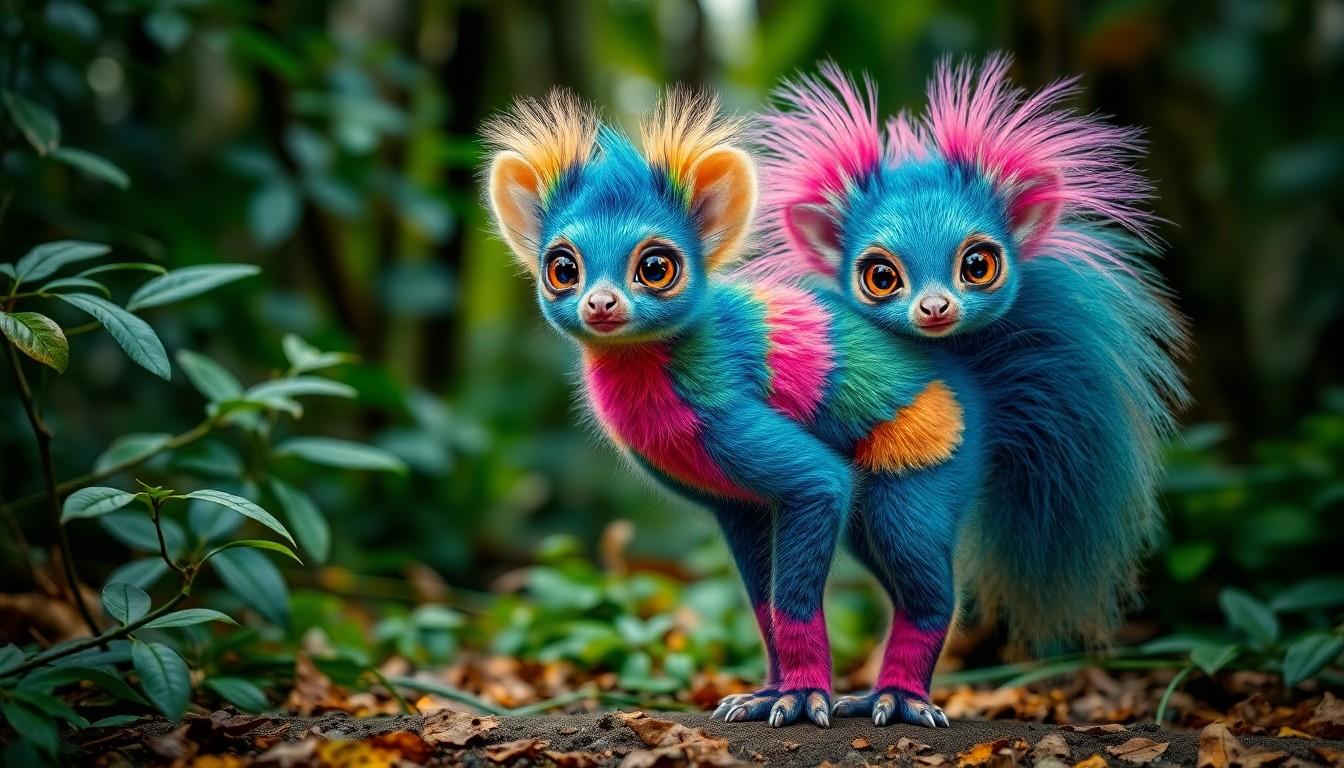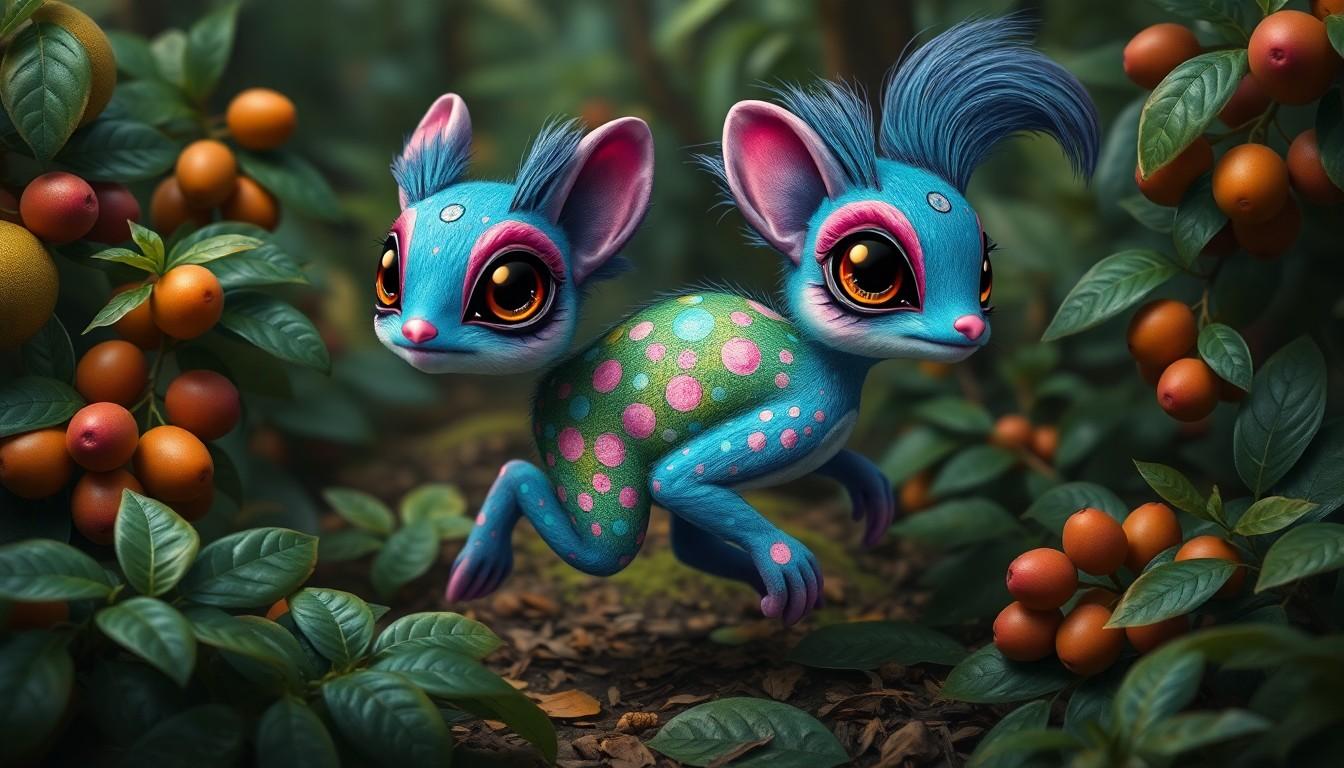Imagine a creature that seems to have jumped straight out of a whimsical storybook. The aupedoco, with its vibrant colors and quirky features, captures the imagination like few others. This fascinating being is a delightful blend of charm and peculiarity, making it a must-see for anyone with a penchant for the unusual.
Overview of Aupedoco
Aupedoco boasts an array of vibrant colors that enchant observers. These creatures often exhibit a mix of blues, greens, and pinks, creating a visually stunning palette. Unique features add to their charm; aupedocos typically possess large, expressive eyes and tufted tails. Each aupedoco showcases irregular patterns, ensuring no two appearances are quite the same.
Physical characteristics contribute to the aupedoco’s whimsical nature. Their small stature, averaging around 30 inches in height, allows them to navigate various environments easily. Inhabiting lush forests and open fields, aupedocos thrive in habitats rich with flora. This adaptability lends to their quirky appearance, which reflects the landscapes they inhabit.
Behaviorally, aupedocos are known for their playful antics. They often engage in social activities, using their distinctive calls to communicate with others. Observers may notice them leaping and bounding, showcasing agility along with their curious demeanor. Social structures can vary, with some forming small groups while others prefer solitude.
Diet and feeding habits further enhance the appeal of the aupedoco. These creatures primarily consume fruits, leaves, and the occasional insect, promoting a balanced ecosystem. Their foraging behaviors illustrate their interaction with surroundings, impacting local plant life and shaping their environment.
Overall, the aupedoco stands out as a captivating creature that fascinates enthusiasts and casual observers alike. Its vibrant colors, unique features, and spirited behavior contribute to its charm, making it an intriguing subject for both study and admiration.
Physical Appearance

The aupedoco exhibits a unique and enchanting physical form, making it an eye-catching creature. Its vibrant features and distinct characteristics greatly contribute to its charm.
Size and Dimensions
Aupedocos typically measure around 30 inches in height. Their small stature allows for agility in navigating their lush forest and open field habitats. Weights can vary but usually fall between 10 to 15 pounds, enabling them to maintain a playful demeanor while exploring their surroundings. This size facilitates their social activities, as they often engage in playful interactions with fellow aupedocos.
Color and Patterns
Colors of aupedocos create a stunning visual display, showcasing bright blues, vibrant greens, and soft pinks. Patterns appear in speckles and swirls across their fur, enhancing their whimsical charm. Large, expressive eyes further intensify their captivating look, allowing for a wide range of emotional expressions. Tail tufts contribute additional visual interest, creating a delightful contrast against their colorful bodies. Each aupedoco has a unique combination of hues, ensuring that no two look exactly alike.
Habitat and Distribution
Aupedocos thrive in diverse habitats that support their playful nature. They primarily prefer lush forests and open fields rich in vegetation.
Preferred Environments
Dense woodlands provide ample cover for aupedocos while fostering their social behaviors. They enjoy areas with plenty of fruit-bearing plants, as these are essential for their diet. Open spaces with clearings allow for agility and playful interactions. The presence of trees offers opportunities for climbing and resting, contributing to their adaptability.
Geographical Range
Aupedocos inhabit regions across both temperate and tropical zones. Their geographical range extends primarily throughout South America, particularly in areas where diverse ecosystems exist. These creatures are commonly found in the Amazon rainforest and surrounding areas, where climate and food resources support their population. Some populations reside in nearby grasslands, showcasing their ability to thrive in varied landscapes.
Behavioral Characteristics
Aupedocos exhibit fascinating behaviors that reflect their vibrant characteristics and social nature. Their interactions provide insight into their social structures and feeding habits.
Social Structure
Social groups of aupedocos usually form tight-knit family units. They thrive on companionship, often seen playing together and engaging in social grooming. Communication occurs through distinctive calls, aiding in maintaining group cohesion. Observations show they can recognize individual sounds, indicating a strong bond between members. Conflicts are rare, as these creatures rely on cooperative behavior for mutual benefits. Group activities enhance their playful traits, making them joyful participants in their habitats.
Feeding Habits
Feeding primarily involves fruits, leaves, and insects, offering a diet that supports their playful lifestyle. Aupedocos actively forage within their lush environments, searching for ripe fruits and tender leaves. Their strong sense of smell helps them locate food sources efficiently. Foraging patterns peak in the morning and late afternoon, aligning with the local climate. Occasionally, they consume insects, adding protein to their diet. This varied diet helps maintain their health while fostering ecological interactions, showcasing their role in the local ecosystem.
Conclusion
The aupedoco embodies a delightful blend of whimsy and charm that captivates all who encounter it. Its vibrant colors and playful nature create a unique presence in the ecosystems it inhabits. As these creatures thrive in diverse environments from lush forests to open fields, their adaptability showcases the beauty of nature’s design. Their social structures and playful antics not only enhance their appeal but also play a crucial role in maintaining ecological balance. With each aupedoco displaying its own distinct patterns and behaviors, they remain a fascinating subject for both nature enthusiasts and casual observers alike.

